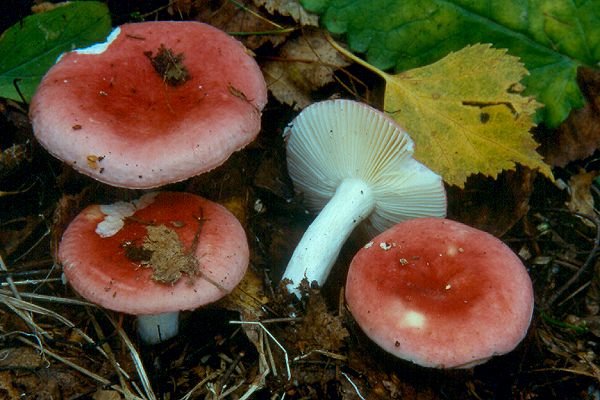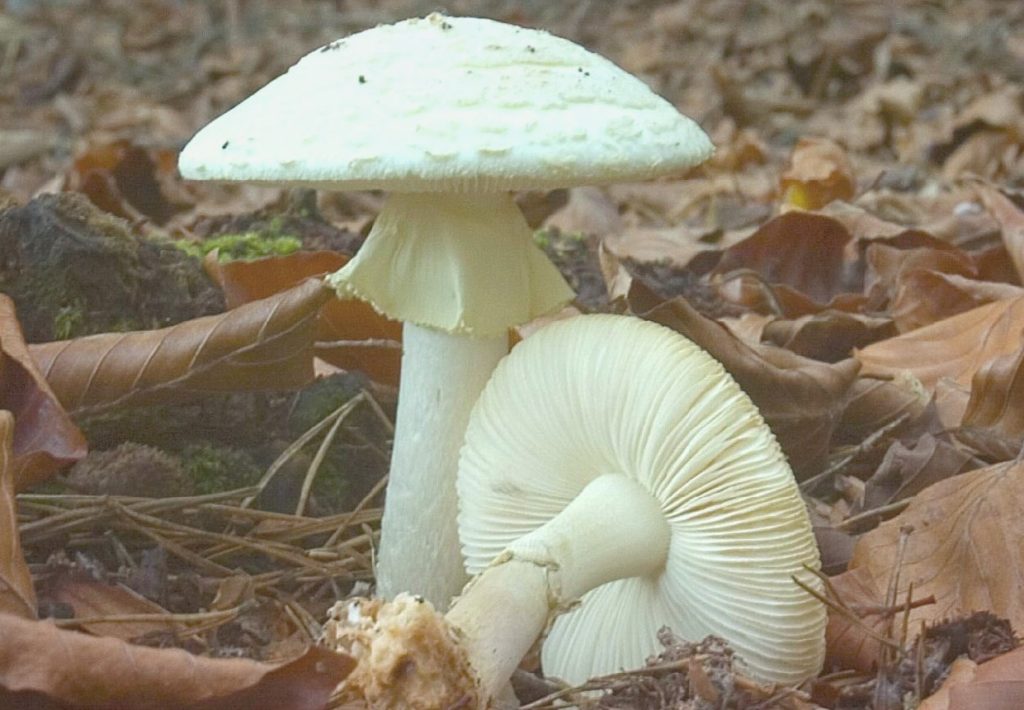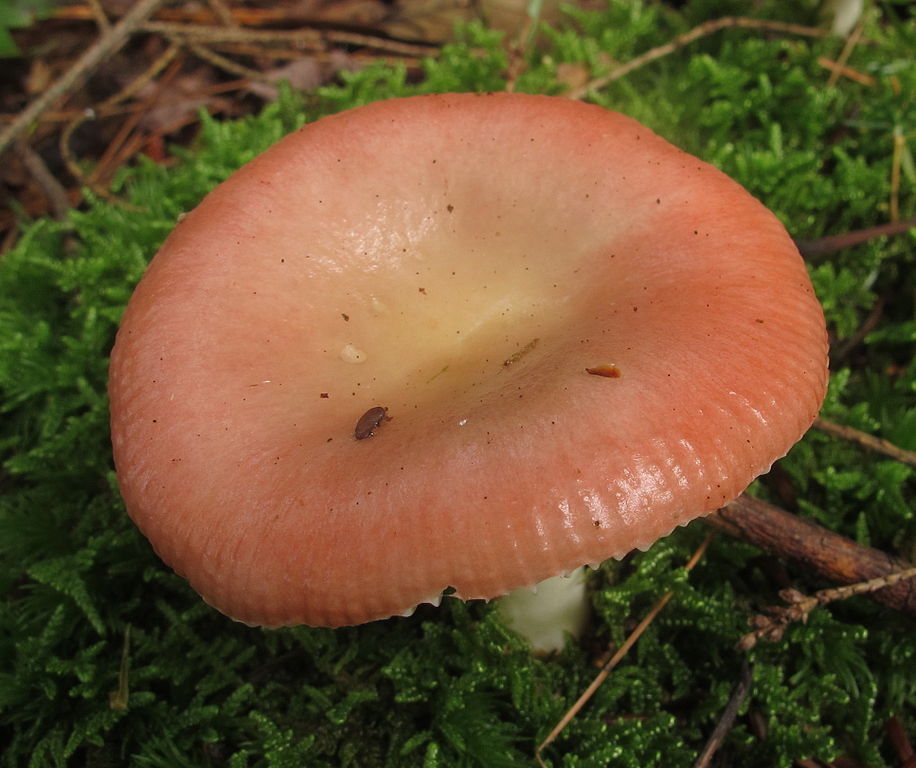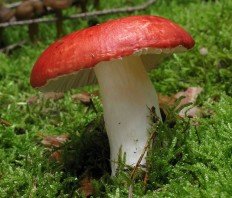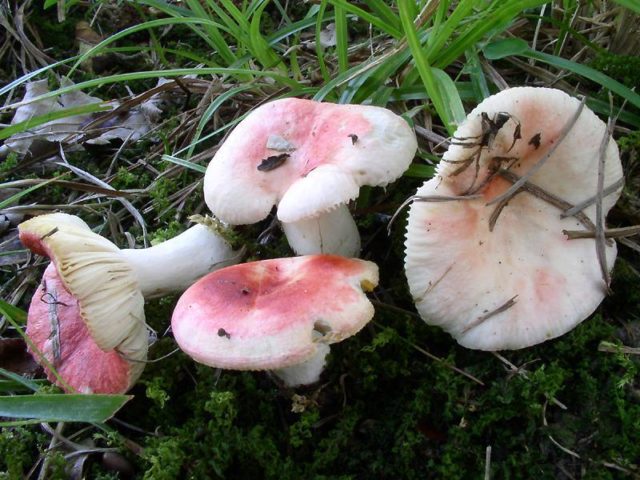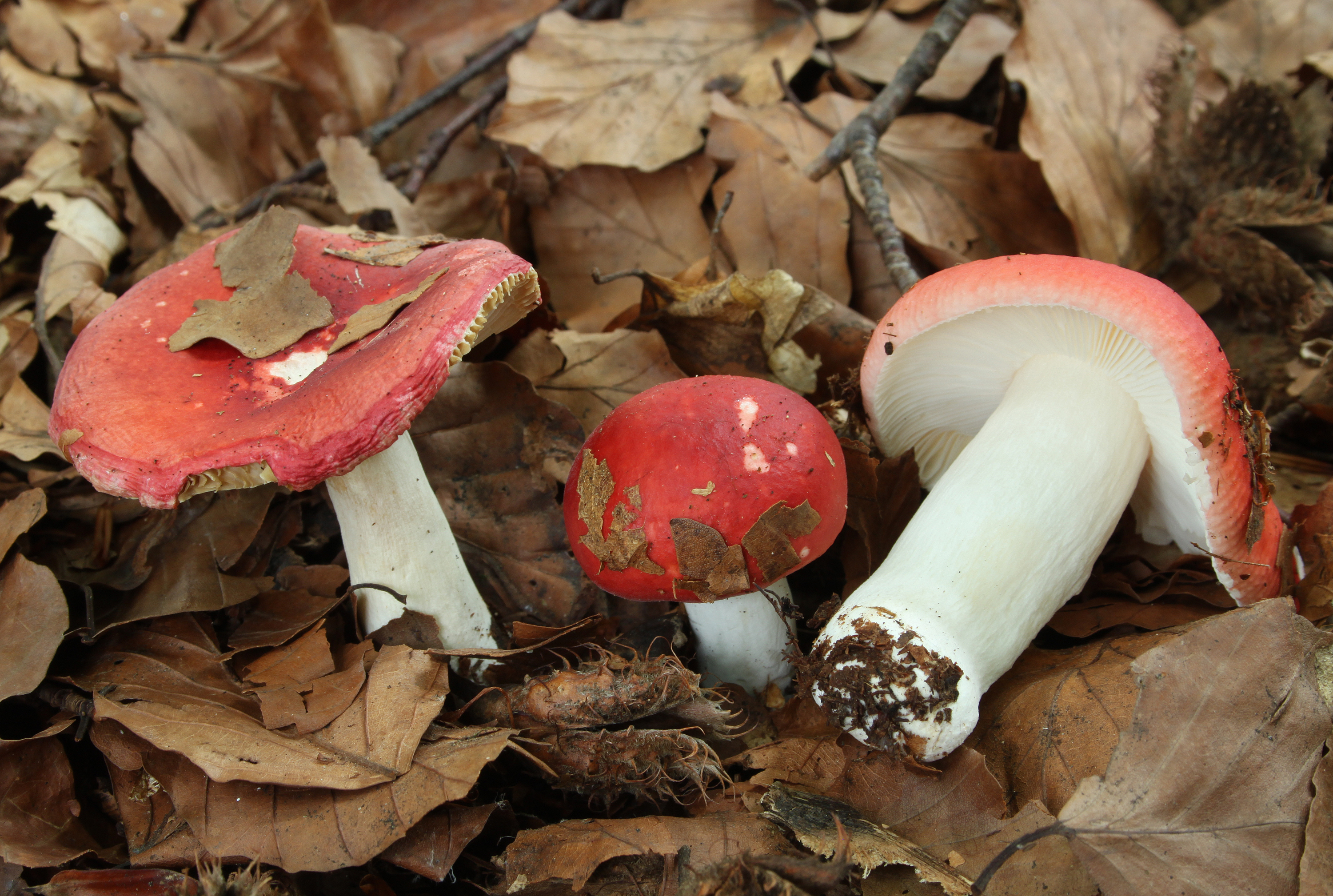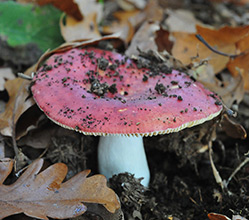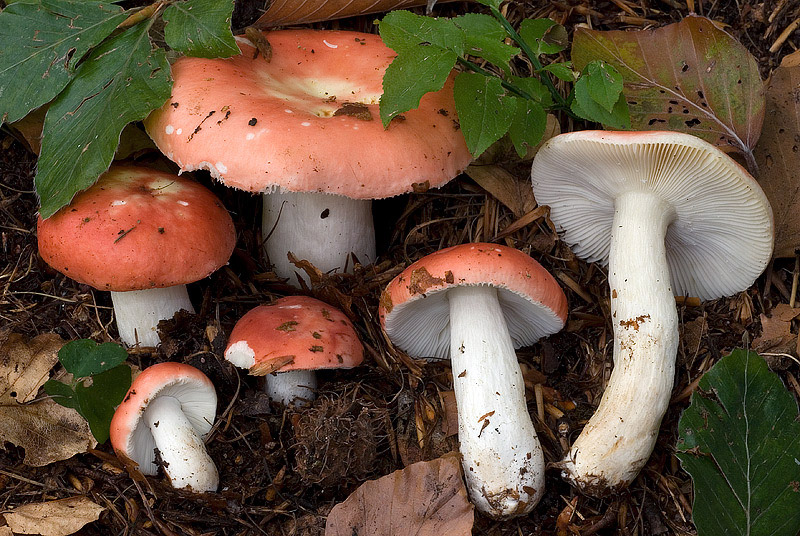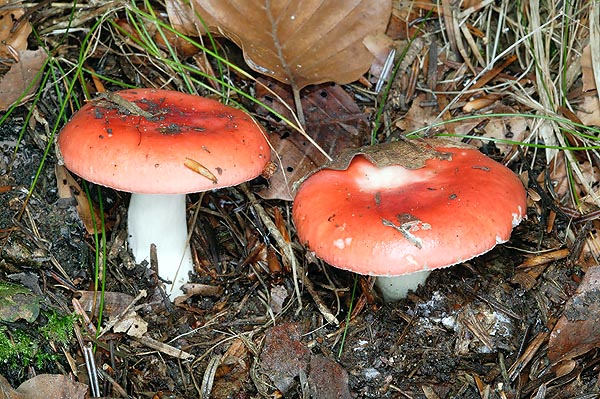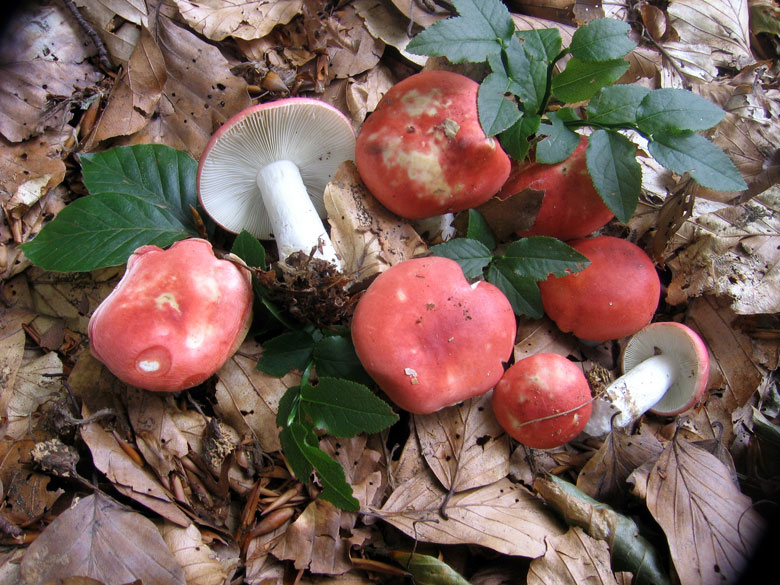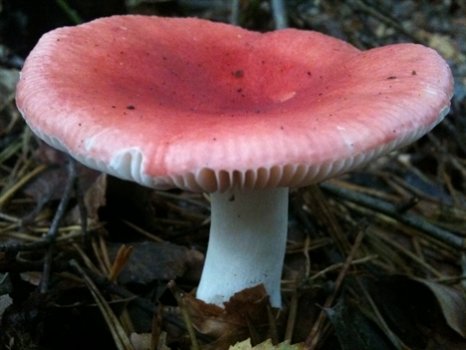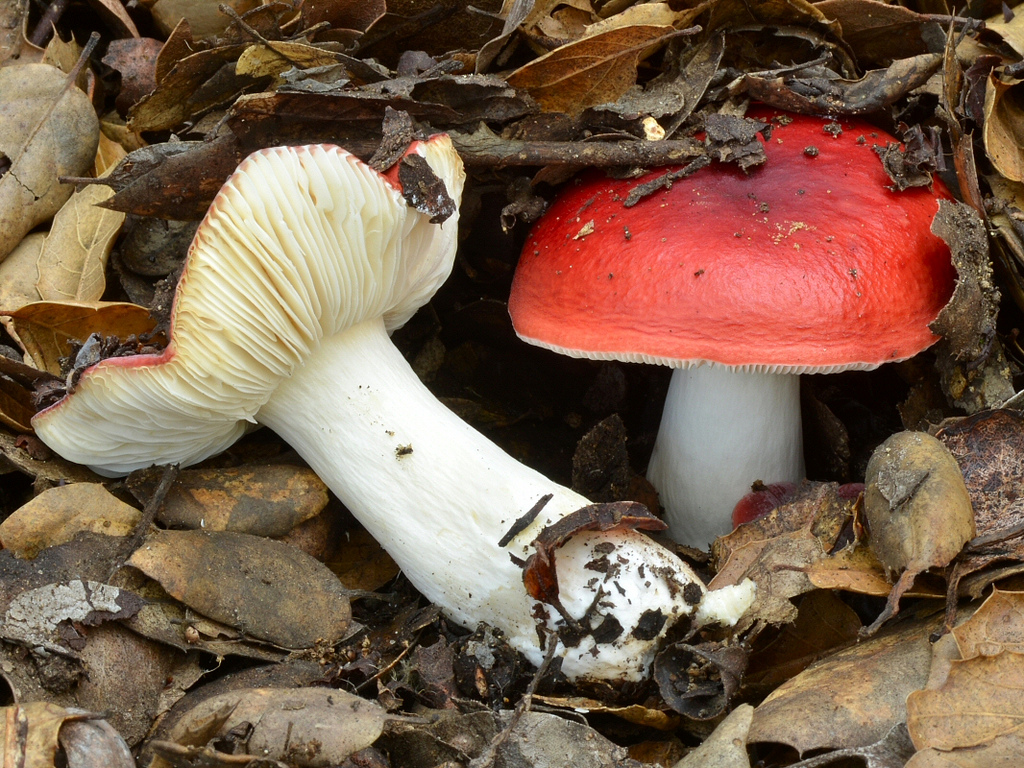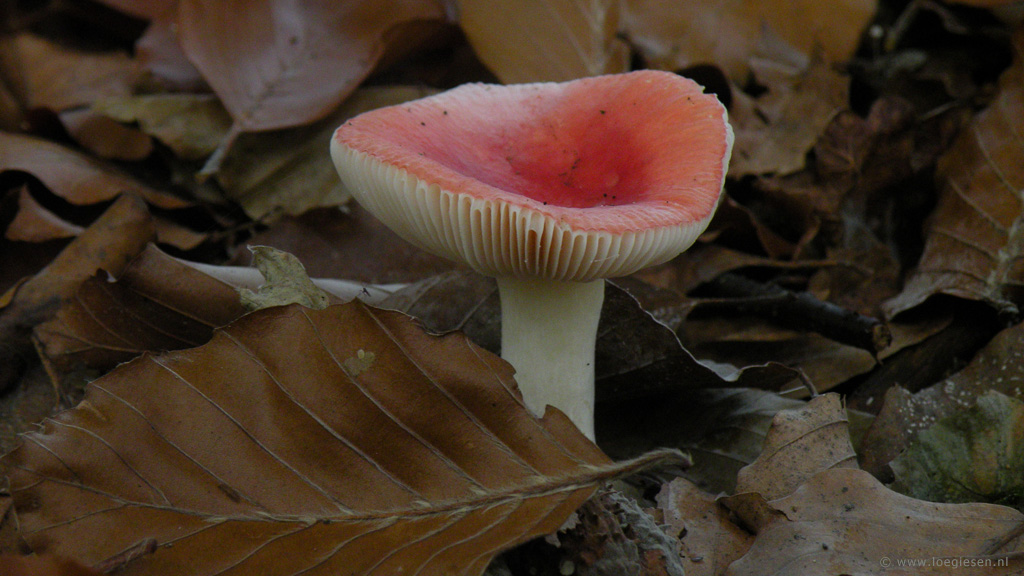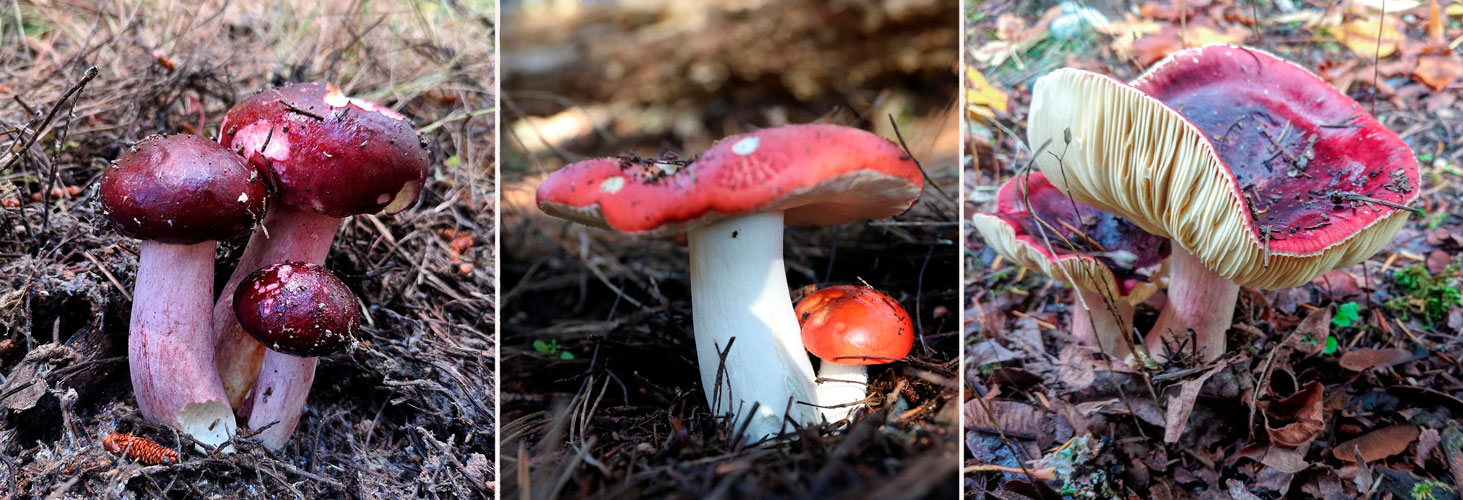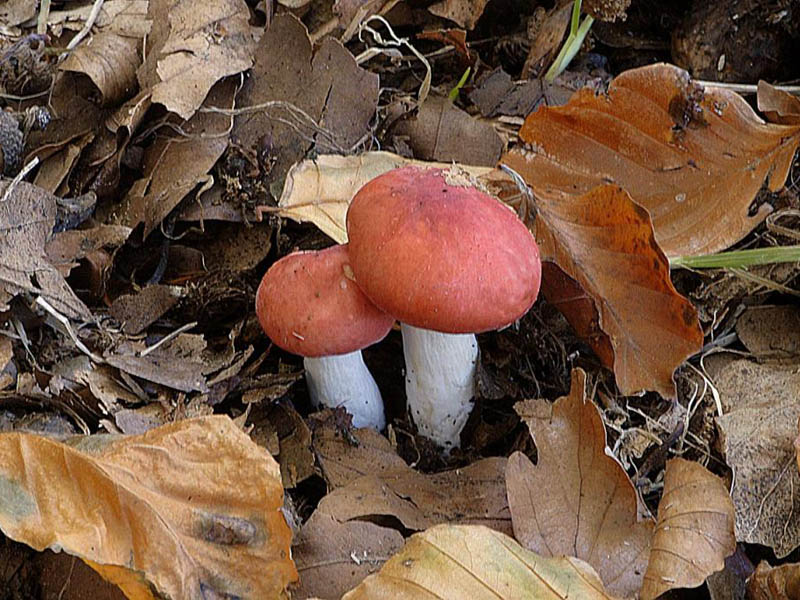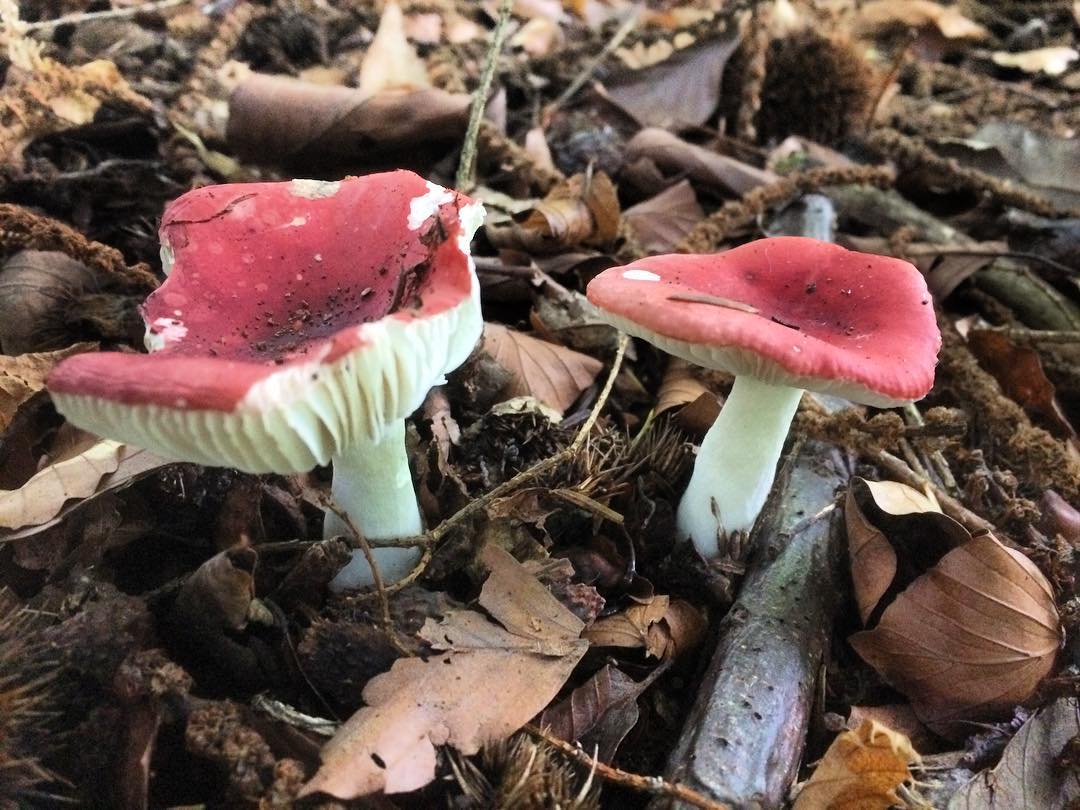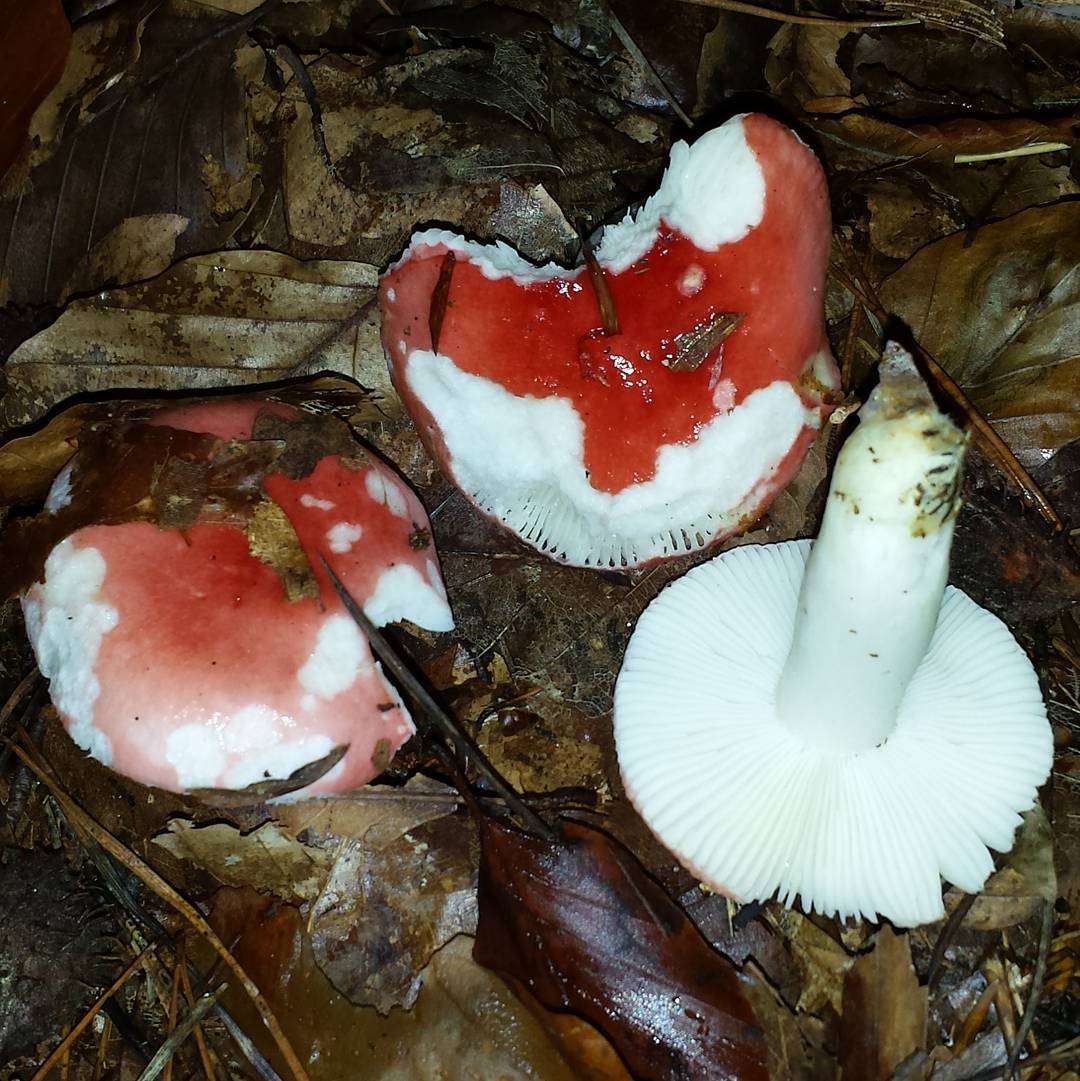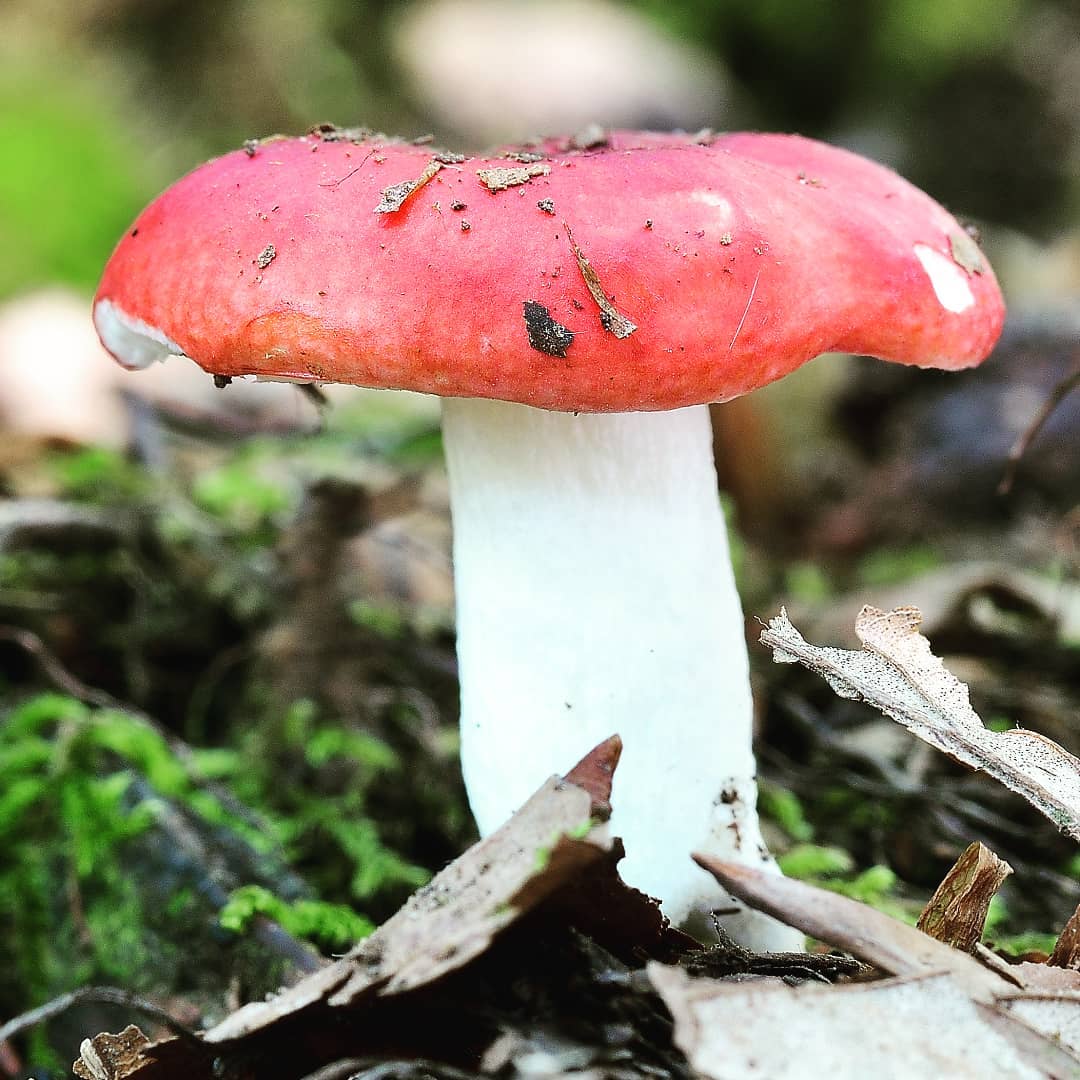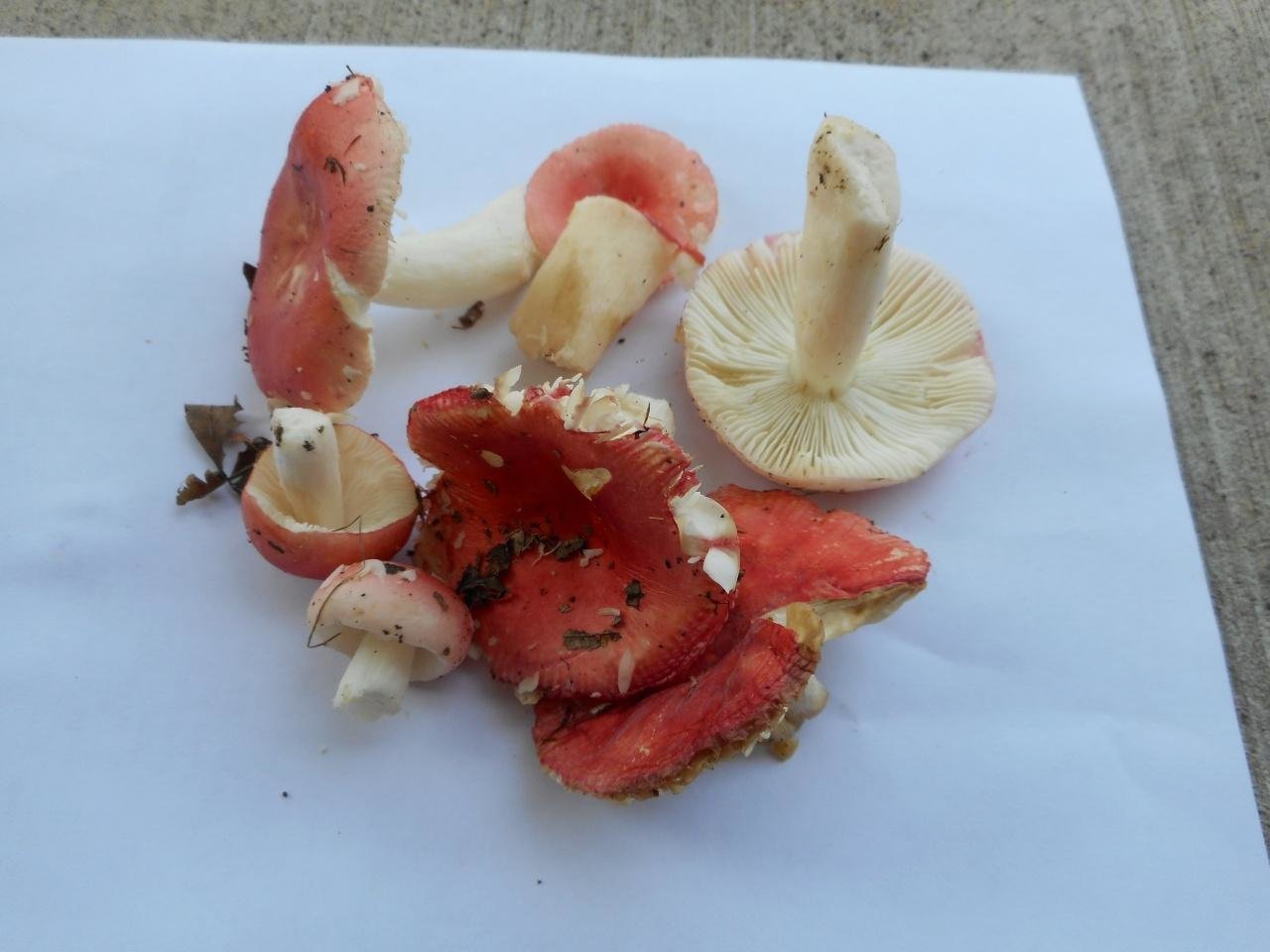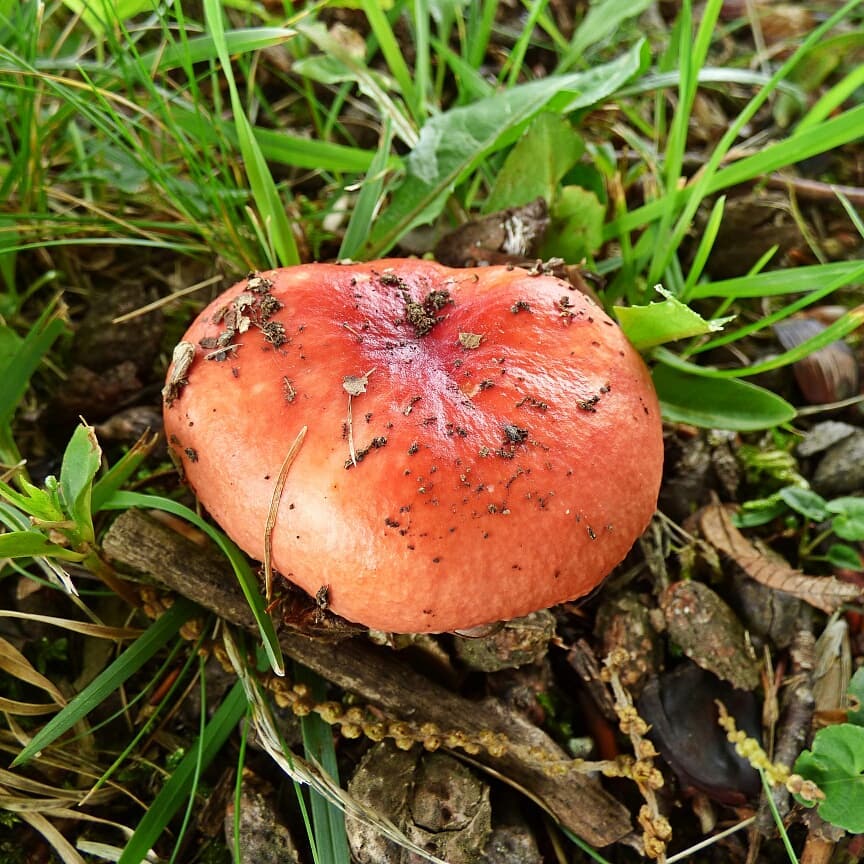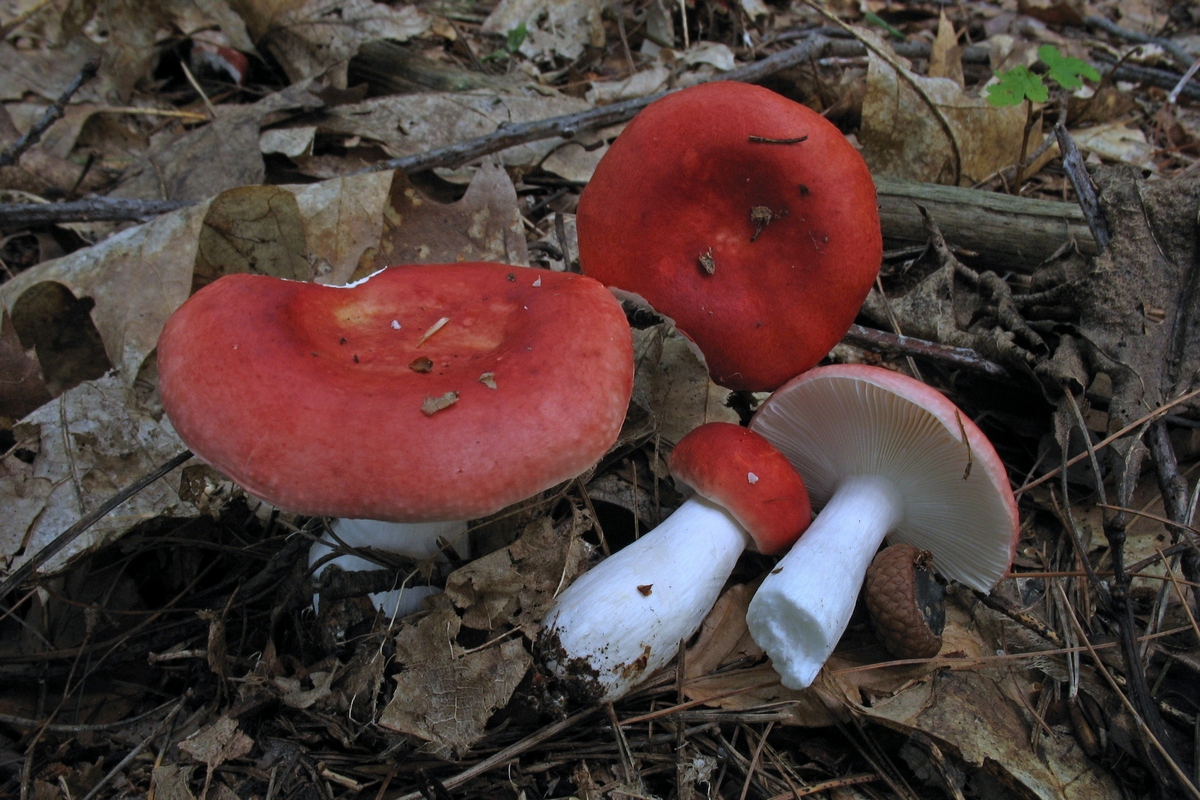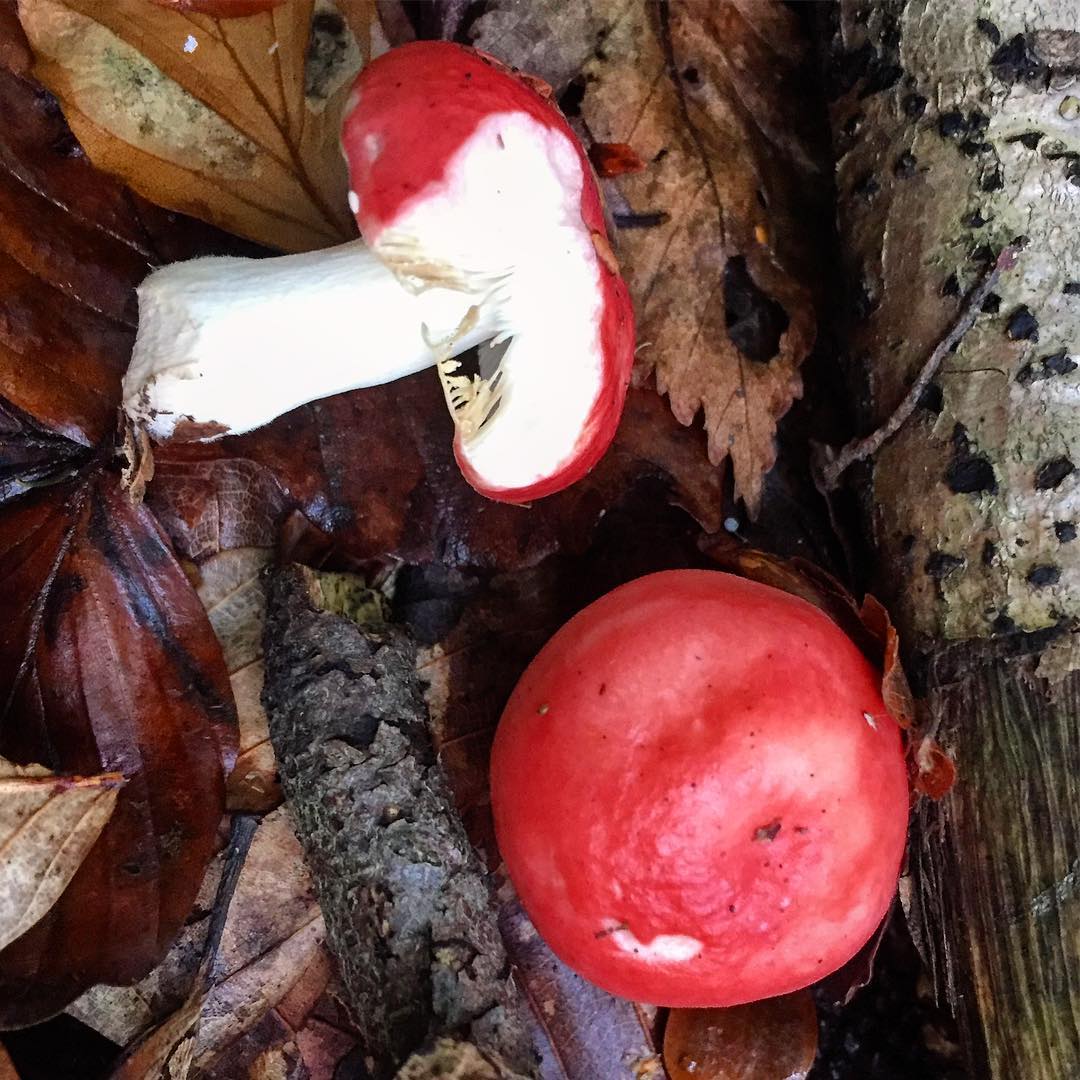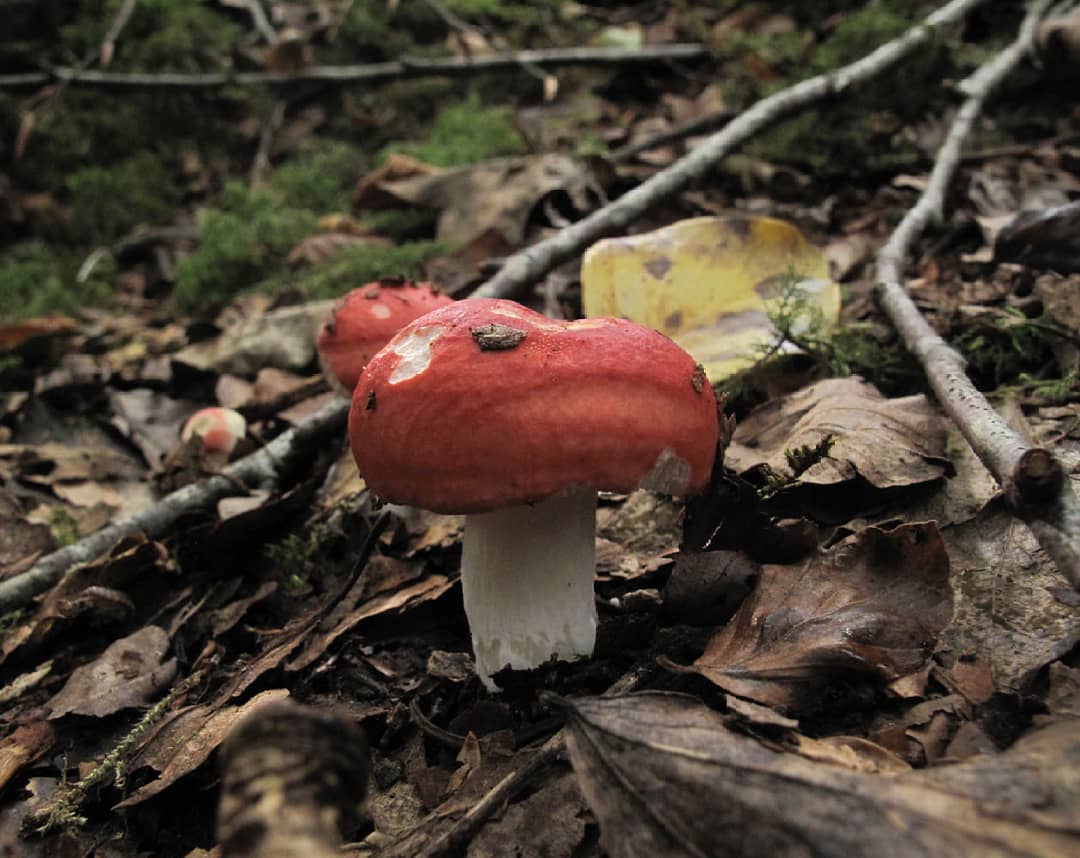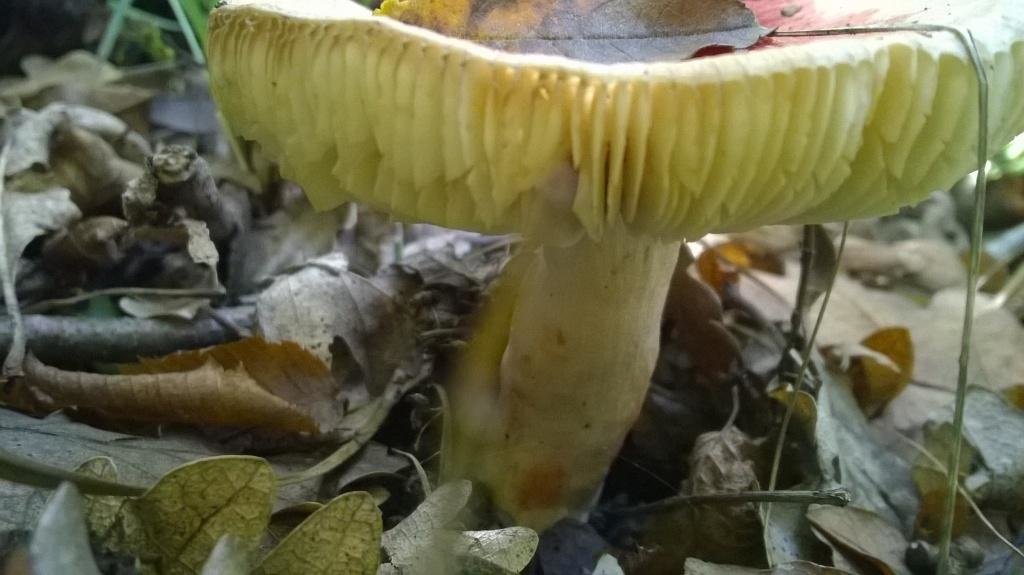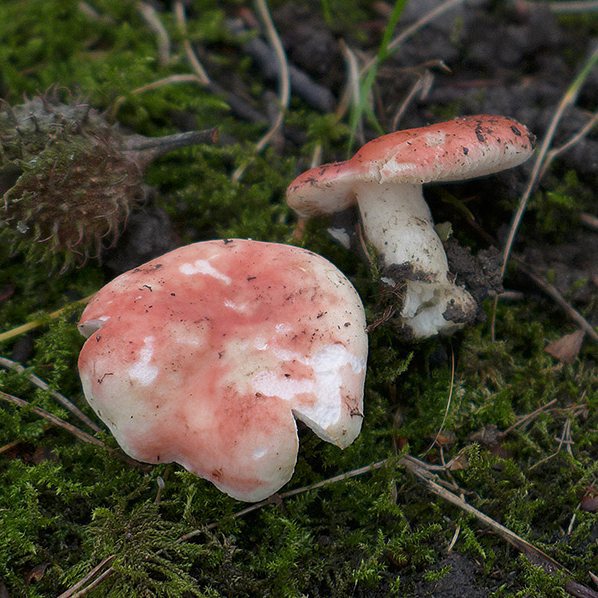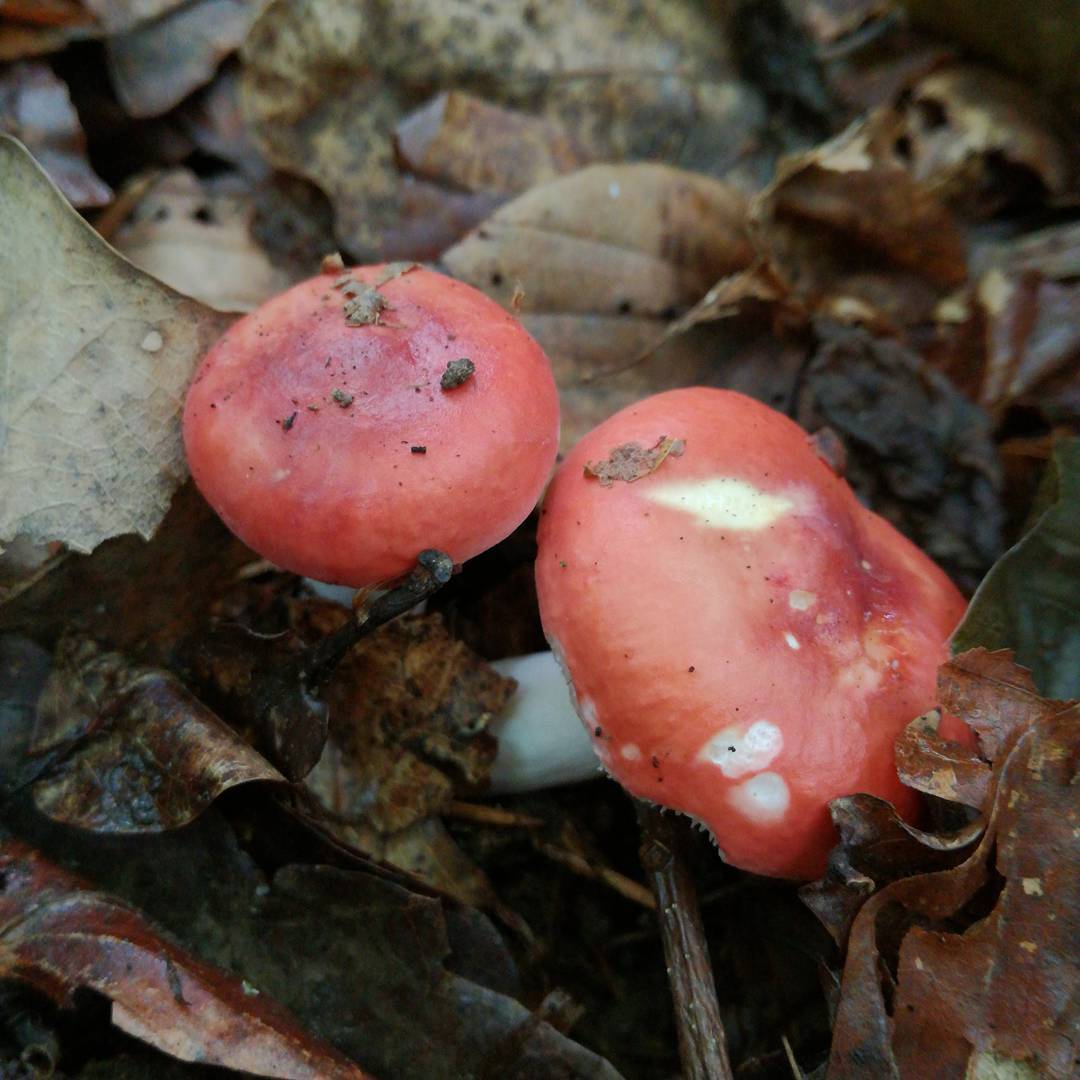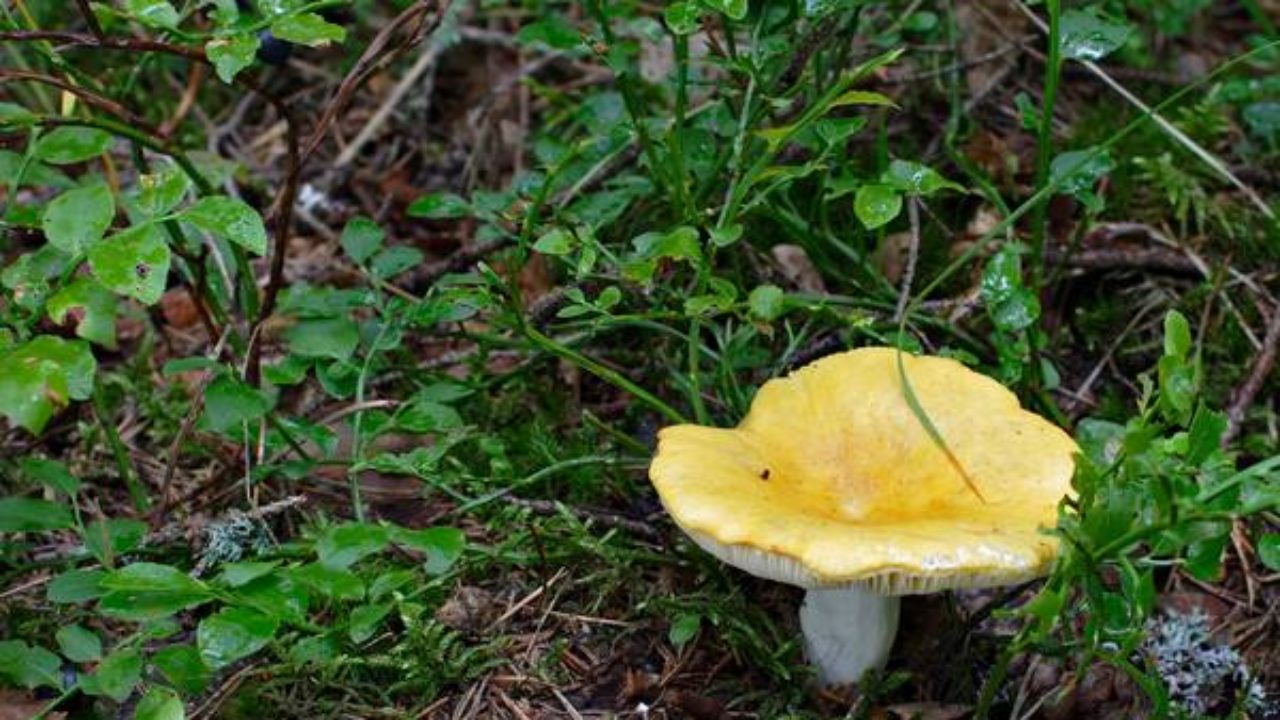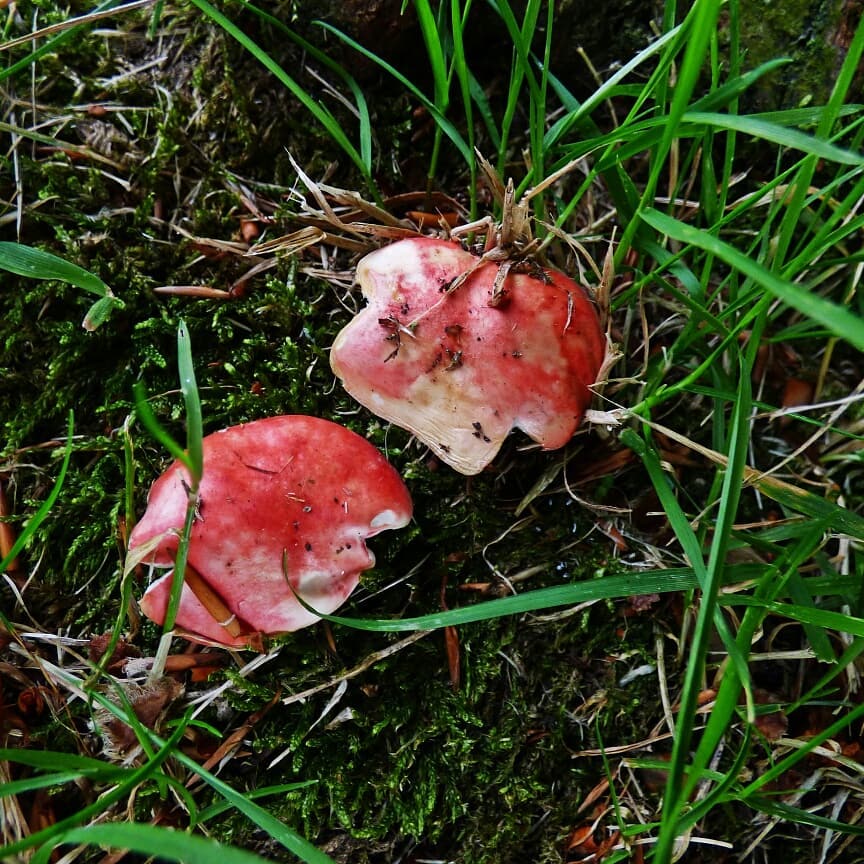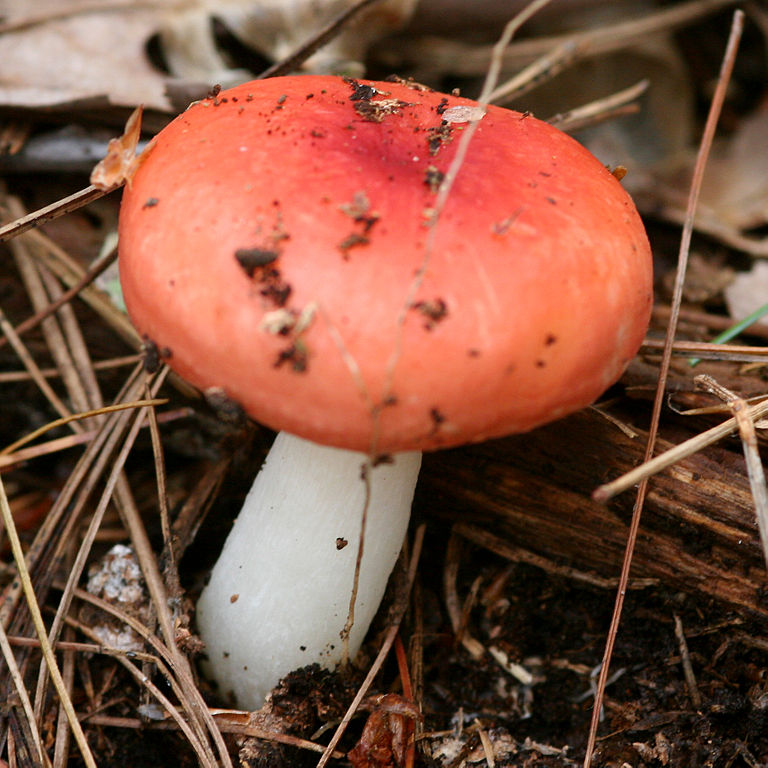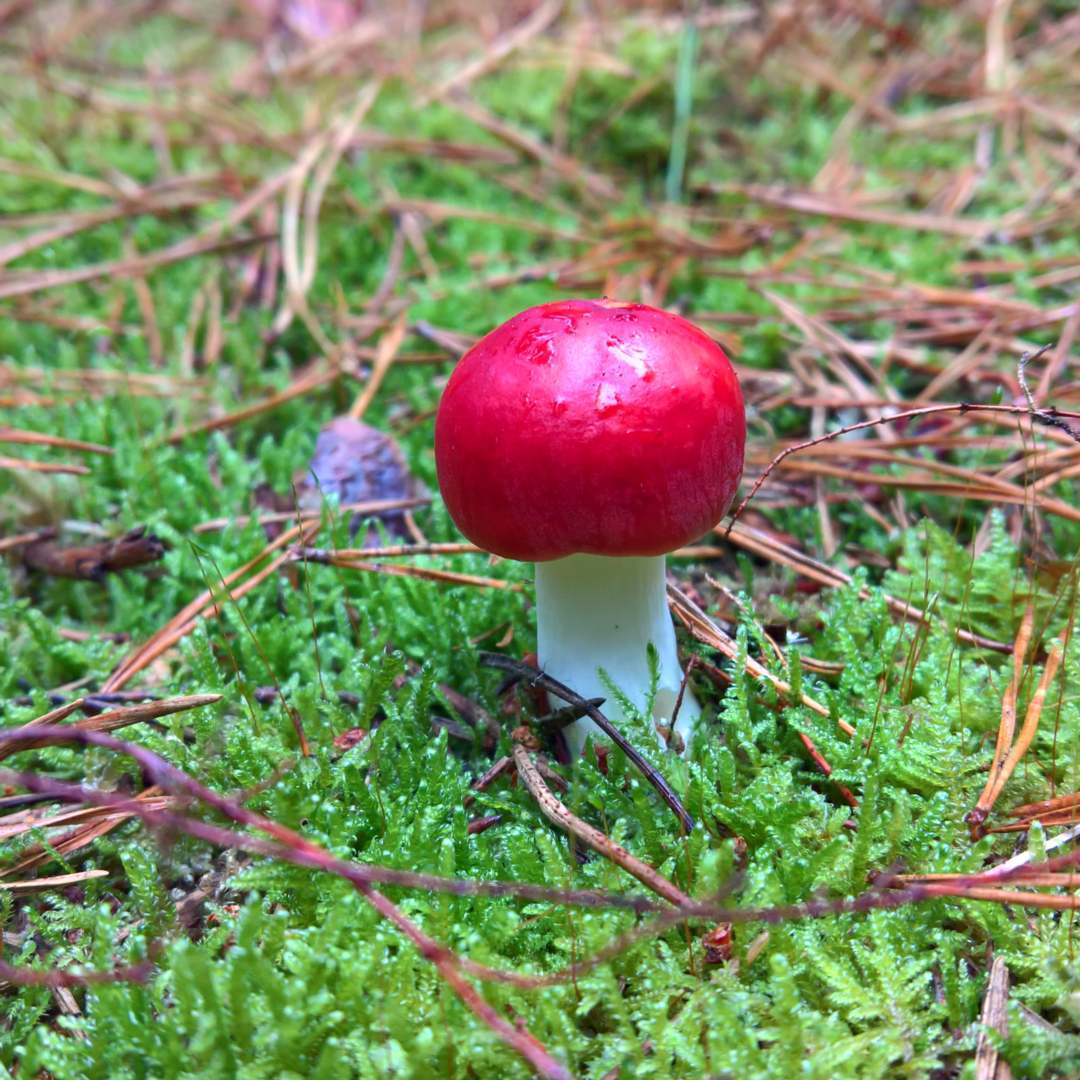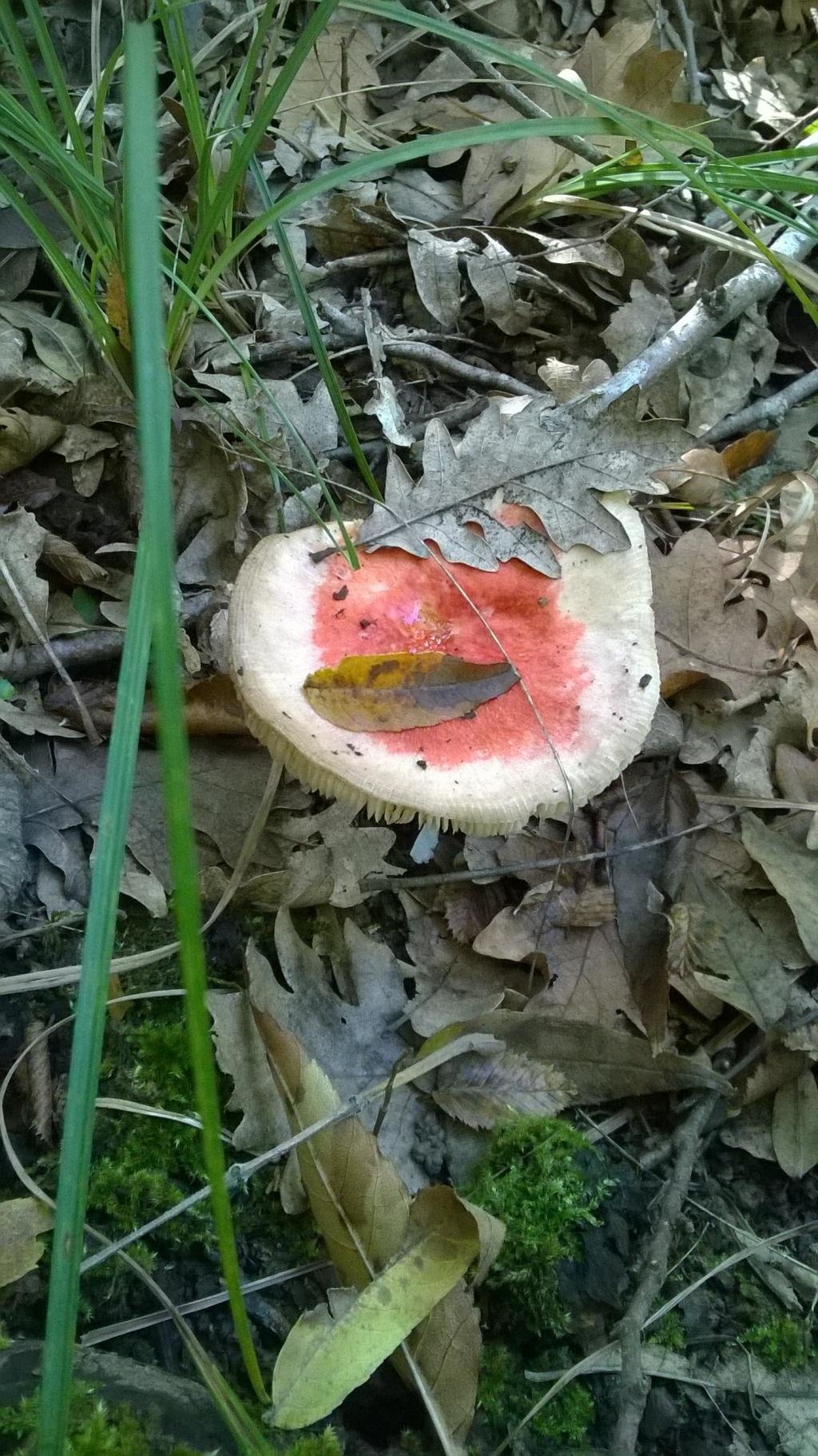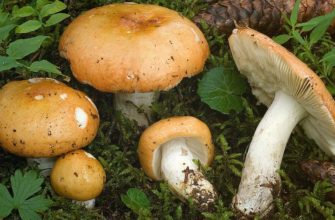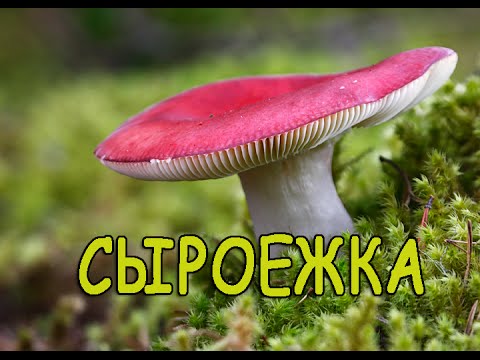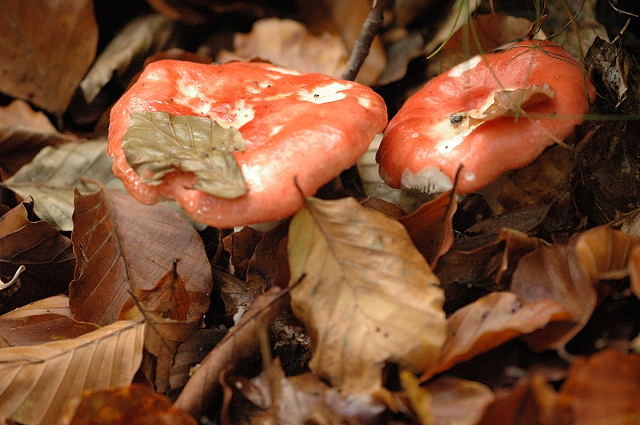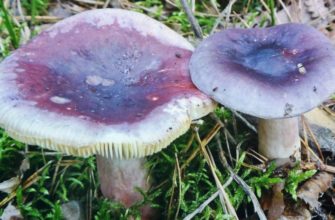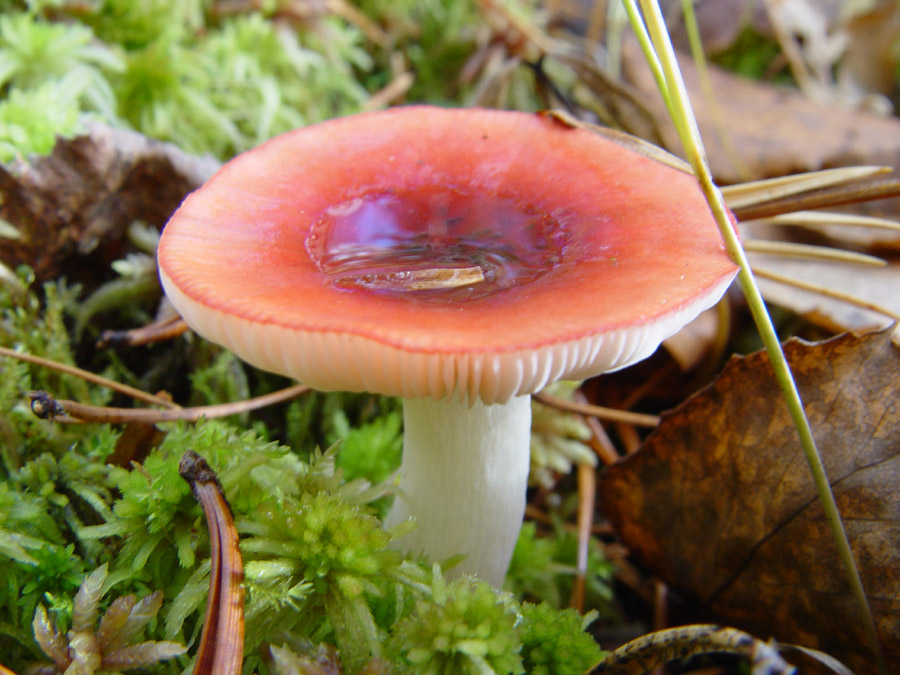Russula - a photo and description of how to distinguish between a false russula and an edible
Edible russula are quite popular mushrooms in our latitudes. You can find a large number of them in the forests, but you need to be able to distinguish between edible russula and inedible
It is also important to remember their photo and know some description.
Greenish russula - description with photo
The greenish russula (Russula virescens) has a cap, the diameter of which can reach up to 16 cm. Its color is green, usually there is a blue or yellow tint. In young mushrooms, the shape of the hemisphere, and in adults, is spread. The skin is quite thick and difficult to separate from the pulp.
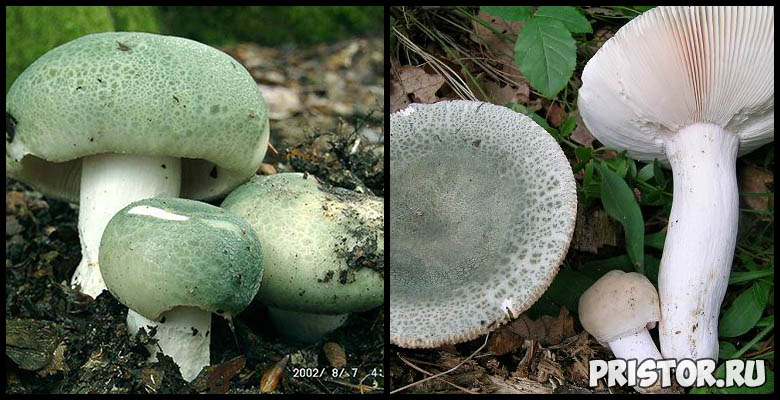
The stem of the mushroom reaches up to 13 cm in height, the color is white or slightly grayish. The flesh is whitish, firm and slightly pungent in taste. The plates are frequent, the shade is white or cream.
The fungus is often confused with the pale toadstool (Amanita phalloides), which has a ring on a leg and a volva.
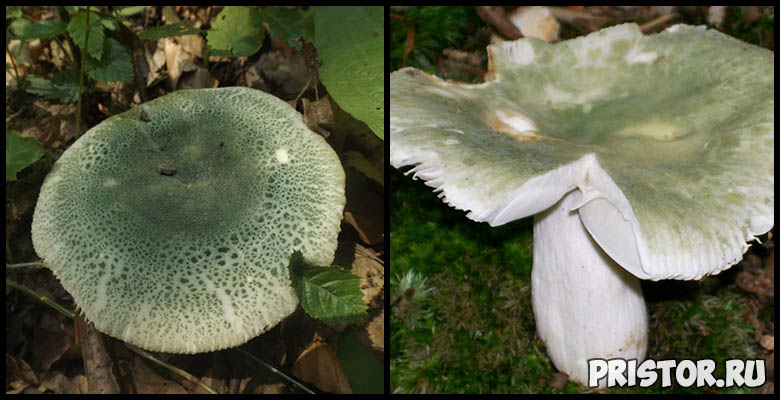
When it grows and where to find it: appears in early July until October. Many people often find the mushroom in mixed and deciduous forests, near birches and oaks.
Food russula - information
The russula is edible or food (Russula vesca) with a cap diameter of up to 10 cm. As a rule, it is painted pinkish or brownish-pink. In young mushrooms it is hemispherical, in mature it becomes flat. Slightly sticky to the touch, fleshy.
The stem of the mushroom can be up to 8 cm in height. The color is white, pink, yellow, the shape is cylindrical, hollow.
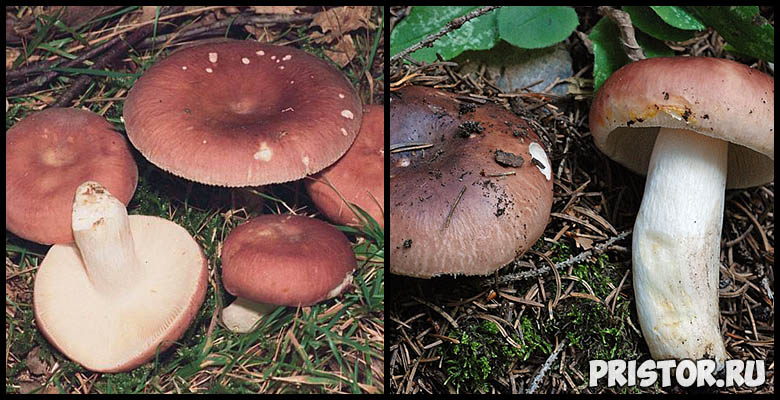
The plates are frequent, yellowish or white, sometimes you can see rusty spots on it.
When it grows and where to find it: you can find it in the month of July until the end of September. Grows in all types of forests, often found near birches and oaks.
Edible russula short-legged - photo and description
The short-legged russula (Russula brevipes) has a cap with a diameter of 8-20 cm, the color is white, matte, sometimes yellow spots are present. In mature mushrooms, the shape is depressed or flat.
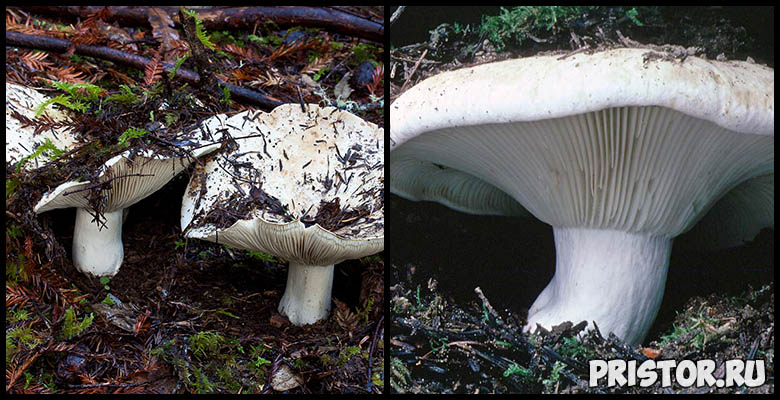
The stem of the mushroom reaches up to 6 cm in height, is short, cylindrical in shape.
When it grows and where to find it: you can go to the forest to collect in early August and until early October. You can find this species in deciduous forests.
Whole russula - edible mushroom
Whole russula (Russula integra), also called russula flawless, wonderful. The mushroom is distinguished by a hemispherical cap, and then outstretched, up to 13 cm in diameter. The color is red-brown, dark yellow, olive or slightly purple. Slightly sticky to the touch and the skin easily falls behind the pulp.
The plates are grayish or yellowish, fleshy. The flesh is brittle, white in color, the taste of young mushrooms is sweet, and of mature ones it is spicy.
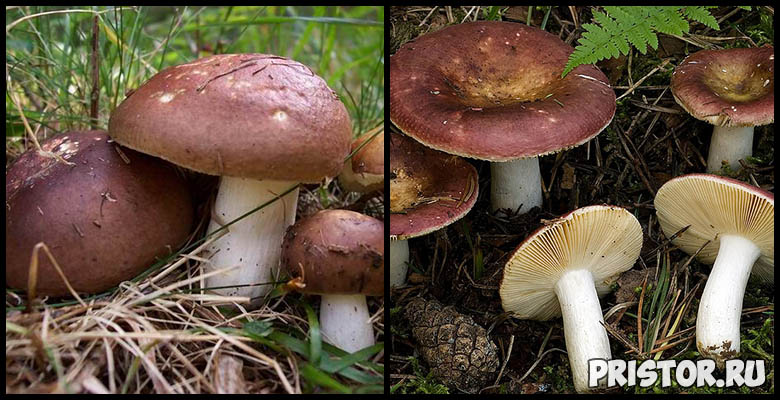
The leg can reach up to 6 cm in height, the color is usually white or pink. The shape is cylindrical, strong enough.
When it grows and where to find it: early July to mid-September. Can be found on calcareous soils of mixed or coniferous forests.
Fading russula - photo, information
The cap of a fading russula (Russula decolorans) reaches a diameter of up to 16 cm, a shade of yellow, reddish, orange, brick, brown. In old mushrooms, the shape is straightened and depressed.
The stem of the mushroom reaches a height of 6-12 cm, rather dense, wrinkled, solid, cylindrical, gray or white in color.

The flesh is firm, gray or white. The plates are wide and thin, gray or yellowish in color.
When it grows and where to find it: appears in July until the end of September. Found in deciduous forests among beech roots.
How to distinguish edible russula from inedible russula
Most often, you can put an emetic or burning-caustic russula in the basket.
Also, other false russula can easily get on your table, so that this does not happen, it is important to know the following signs of an inedible mushroom:
- the end of the leg, as a rule, has a pink tint;
- the plates are rough and thick;
- the structure of the pulp is quite dense;
- there are no parasites on the mushroom;
- there is a skirt / film on the leg.
You can also taste the mushroom.This will not create any threat, perhaps there will be only a burning sensation of the tongue or slight discomfort that disappears after 5-20 minutes.
Death cap
The most dangerous and poisonous mushroom is the white toadstool. A person can easily confuse this mushroom with green russula. The white toadstool has a hat up to 14 cm in diameter, the plates are frequent, white, and the taste is neutral.

Mushrooms can be distinguished by the presence of a ring on the stem and a thickened cup-shaped base in a pale toadstool. Also, beware of these types of russula: "Eating russula", "Blood-red russula" and "Caustic russula (stinging)."
Mayra's russula description, edibility, how to distinguish, photos - Heating and heat supply
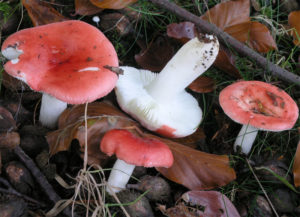
| Name: | Mayr's russula |
| Latin name: | Russula nobilis |
| View: | Inedible |
| Synonyms: | Russula noticeable, Russula mairei, Russula fageticola, Russula fagetorum |
| Systematics: |
|
Russula grows in virtually any forest. The different species of this fungus family prefer to build their own connection with specific trees. And they are distinctive, it may immediately seem that, by the shade of the hat. There are species with a bright red cap among russula. One of them is Mayra's russula, beckoning with her own flashy palette of colors. But it is better for an inexperienced mushroom picker to bypass him so that there are no adverse consequences if the mushrooms are not properly finished.
How Mayr's russula look
Important signs of Mayr's russula are similar to those of other members of this family, but there are also special lines that are distinctive exclusively for this species.
The appearance of Mayr's russula can be described as follows:
- The hat is 30-90 mm in diameter, in young specimens it has a hemispherical shape. As the fungus grows, it becomes flatter and even slightly concave to the center. The color of the cap changes with age from deep red to light pink.
- The pulp is dense, but easily crumbles, has a persistent fruit aroma, does not change color at the break. The skin is dry and smooth, becomes sticky in wet weather, detaches freely only along the edge.
- The plates on the underside of the cap are permanent, whitish, of medium width, grow to the stem, change color with age and turn from white to cream.
- The leg is straight, cylinder-shaped, white with a small brown color at the very base, grows up to 6-8 cm in height and 1 cm in diameter. It has a dense structure and a perfect surface.
The cap and stem of Mayr's mushroom are very fragile and can break very easily. Fragility is given to them by special vesicular cells located in the fruiting body. If one of the parts of the mushroom is broken, milky juice is not released, and the edges remain dry.
Is it possible to have Mayr's russula
Meir's russula is considered by Western masters to be an inedible mushroom because of its pungent taste. Eaten raw, it can cause irritation of the oral mucosa, minor gastrointestinal disturbances and stomach cramps. A boiled mushroom can only damage the whole dish with its own bitter taste. Therefore, it is not recommended to eat Meiru even after thermal treatment.
Russian mushroom pickers think that Mayr's russula can be eaten, but only in salted and pickled form after prolonged boiling. And this significantly reduces its good properties and taste qualities. However, it minimizes the risk of getting poisoned.
Similar species
- Russula emetica (Schaeff.) Pers., 1796 grows mainly in coniferous forests, is distinguished by a more intensely colored cap, which becomes funnel-shaped with age.
- Russula grisescens (Bon & Gaugué) Marti, 1984 grows in coniferous forests, the pulp noticeably turns gray in water and in wet weather.
- Russula luteotacta Rea, 1922 grows mainly under the hornbeam, is characterized by intense yellowing after a few hours of pulp, rather rare and sometimes descending plates and non-reticulated spores.
- Russula persicina Krombh., 1845 also grows under beech, is distinguished by a reddish stalk, creamy spore powder and yellowish plates in old mushrooms.
- Russula rhodomelanea Sarnari, 1993 grows under an oak tree, is distinguished by sparser blades and blackening pulp when dry.
- Russula rosea Pers., 1796, also found in beech forests, has a reddish stem and a mild taste.
- Russula silvestris (Singer) Reumaux, 1996 outwardly almost indistinguishable, differs in a negative color reaction to a solution of guaiacum juice and larger spores.
How Mayr's russula look
Important signs of Mayr's russula are similar to those of other members of this family, but there are also special lines that are distinctive exclusively for this species.
The appearance of Mayr's russula can be described as follows:
- The hat is 30-90 mm in diameter, in young specimens it has a hemispherical shape. As the fungus grows, it becomes flatter and even slightly concave to the center. The color of the cap changes with age from deep red to light pink.
- The pulp is dense, but easily crumbles, has a persistent fruit aroma, does not change color at the break. The skin is dry and smooth, becomes sticky in wet weather, detaches freely only along the edge.
- The plates on the underside of the cap are permanent, whitish, of medium width, grow to the stem, change color with age and turn from white to cream.
- The leg is straight, cylinder-shaped, white with a small brown color at the very base, grows up to 6-8 cm in height and 1 cm in diameter. It has a dense structure and a perfect surface.
The cap and stem of Mayr's mushroom are very fragile and can break very easily. Fragility is given to them by special vesicular cells located in the fruiting body. If one of the parts of the mushroom is broken, milky juice is not released, and the edges remain dry.
Description
The cap reaches 3-9 cm in diameter, at first hemispherical, then convex, flattened and slightly depressed. The color is first blood-red, then washed out and becomes red-pink, sometimes completely white. The skin is removed only along the edge of the cap.
frequent, adherent to the stem, whitish at first, then light cream.
The stem is cylindrical, strong, pure white, very rarely, if the edge of the cap is not bent, pinkish, sometimes yellowish or brownish at the base.
The flesh is strong, white, reddish under the skin, with a fruity or honey smell and a strong pungent taste. When reacted with a solution of guaiacum, it intensely stains.
Spore white powder. Spores 6.5-8 × 5.5-6.5 µm, obovate, warty, with a well-developed mesh. Pileocystids are clavate.
It is considered an inedible and even poisonous mushroom due to its bitter taste. In its raw form, it can cause mild gastrointestinal poisoning.

